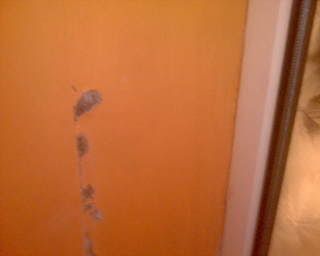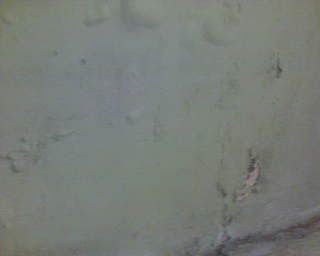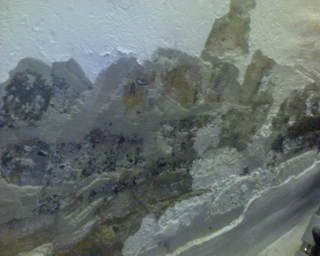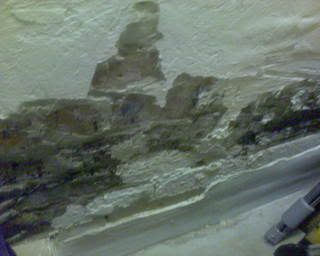Hi, I seem to be having a problem with dampness.
I live in a 1960 John Lawrence semi.
There is some dampness running up the length of the wall at the front door. This was not the original place for the front door. The house had a sort of lobby. The front door was moved out to make the front hall bigger (most of the housed here have done this). The part of the wall that is damp was the brick pillar (which was originally outside), This has been plastered on the inside and rendered on the outside, but the dampness is coming through.
I had a problem with the guttering, it was leaking heavly (well the corner peice was missing for about 6 month ). I have now fixed this but the rendering has blown. Will the blown rendering be holding moisture and make the drying out of the wall impossible (remember I live in Glasgow, we get a lot of rain in the winter
). I have now fixed this but the rendering has blown. Will the blown rendering be holding moisture and make the drying out of the wall impossible (remember I live in Glasgow, we get a lot of rain in the winter  ).
).
I also have dampness in the basement. I think this could be to do with a lack of ventilation but I an not sure. The dampness seems to affect the lower part of the walls and not all the walls are affected. I will be fitting an extractor fan, so hopefully this problem will be sorted out. I must also say that I have a radiator in the basement that heats up when we have the heating on.
Any ideas about what is making my hall and basement walls damp, hat can I do to fix them and how long does it usually take to dry out damp walls ?
This is the hall wall. you can see where the brick wall ends and the drywall starts. The glass you see to the right is the door frame.

These are the basement walls. these are pictures of the inside of an external wall. most of the dampness is on the external walls but not all. It is on other walls in the basement, but these are retaining walls with soil behind them.



Also on this wall we have brick stairs leading up to the back door, under these stairs is the water tape that has flooded a couple of times but not in a while.
but not in a while.
thanks in advance for any help.
Gary.
I live in a 1960 John Lawrence semi.
There is some dampness running up the length of the wall at the front door. This was not the original place for the front door. The house had a sort of lobby. The front door was moved out to make the front hall bigger (most of the housed here have done this). The part of the wall that is damp was the brick pillar (which was originally outside), This has been plastered on the inside and rendered on the outside, but the dampness is coming through.
I had a problem with the guttering, it was leaking heavly (well the corner peice was missing for about 6 month
I also have dampness in the basement. I think this could be to do with a lack of ventilation but I an not sure. The dampness seems to affect the lower part of the walls and not all the walls are affected. I will be fitting an extractor fan, so hopefully this problem will be sorted out. I must also say that I have a radiator in the basement that heats up when we have the heating on.
Any ideas about what is making my hall and basement walls damp, hat can I do to fix them and how long does it usually take to dry out damp walls ?
This is the hall wall. you can see where the brick wall ends and the drywall starts. The glass you see to the right is the door frame.

These are the basement walls. these are pictures of the inside of an external wall. most of the dampness is on the external walls but not all. It is on other walls in the basement, but these are retaining walls with soil behind them.



Also on this wall we have brick stairs leading up to the back door, under these stairs is the water tape that has flooded a couple of times
thanks in advance for any help.
Gary.

